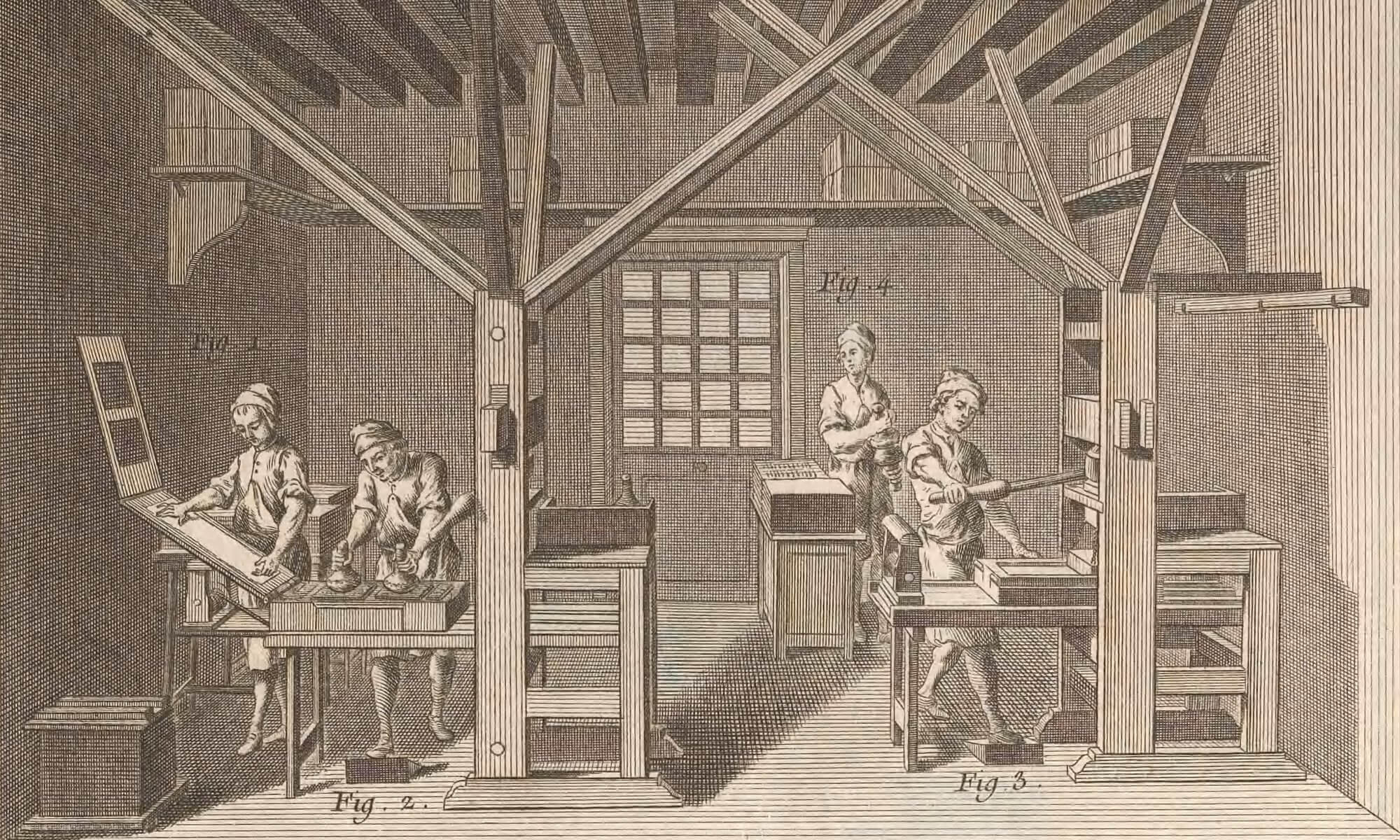Goal: This worksheet will help students learn how to look carefully at books, taking notice of their features. It does not depend on a knowledge of bibliographic terms or other specialist techniques, nor is it asking for any understanding of the causes or meanings of these features.
Note: This exercise works well as a part of a series of helping students understand how catalog records translate to copies of books. You can precede it with the catalog wishlist exercise and choose books from their lists for students to examine in this exercise. A more detailed version of the questions to ask and why they matter can be found in Studying Early Printed Books 1450–1800: A Practical Guide.
Appearance
Book size
- Approximately how large are the pages? (If you don’t have a ruler, guess: “about the size of a regular piece of paper” or “about as tall as my hand”)
- How many pages are in your book? (You can describe the number of pages as a rough guess or in terms of measuring the “depth” of the book if your book isn’t paginated or foliated.)
Binding
- What does the book’s binding look like? (color, material, texture, decoration)
- Is the book housed in a box or other case?
- Are the fore-edges of the book gilt or otherwise decorated?
- Are the pastedowns and end leaves made from decorative papers or paper otherwise notably different from the text block?
Contents
Title page
- Is there a title page?
- What sort of information does it seem to provide?
- What does it look like? (printers’ device, illustrated, font choice)
Colophon
- Is there a colophon?
- What sort of information does it seem to provide?
Navigation
- Does your book use page numbers?
- Is it foliated (that is, counting leaves rather than pages)?
- Are there other text divisions, such as act/scene divisions, or chapters, or books?
- Is there an index? Where is it?
- Is there a table of contents? Where is it?
Categories of text
- Does there seem to be different categories of text in your book, such as a preface, or letters, or arguments, or dedications?
- Are there printed marginal notes?
- An errata list?
- A register?
- Are there multiple works bound together in a single volume?
Page features
- What sort of page features do you see? Common examples are headlines, signature marks, and catchwords
- What other features do you see? (initial letters, spaces for initial letters, guide letters, printed marginal notes, and page or leaf numbers)
- What is the overall impression an opening makes? Are the pages densely printed? Are there different categories of text?
Illustrations
- Are there illustrations in the book?
- Approximately how many?
- Approximately what size? (full-page, initial, quarter-page)
- Can you tell if they are woodcuts, engravings, or etchings?
Usage
Wear and tear
- Are there notable marks of wear or damage? (wormholes, water damage, torn or repaired pages, mold, foxing, cut-out pages or sections, etc.)
Readers’ marks
- Are there readers’ marks in the books? Where?
- What sort of marks? (doodles, signatures, fists, pictures, coloring in initials, textual annotations, other textual content)
Provenance
- Are there marks of ownership/provenance? (bookplates, library shelfmarks, owners’ inscriptions, booksellers descriptions, prices, exhibition labels)?
- If they’re legible: Where? What? Who? When?
